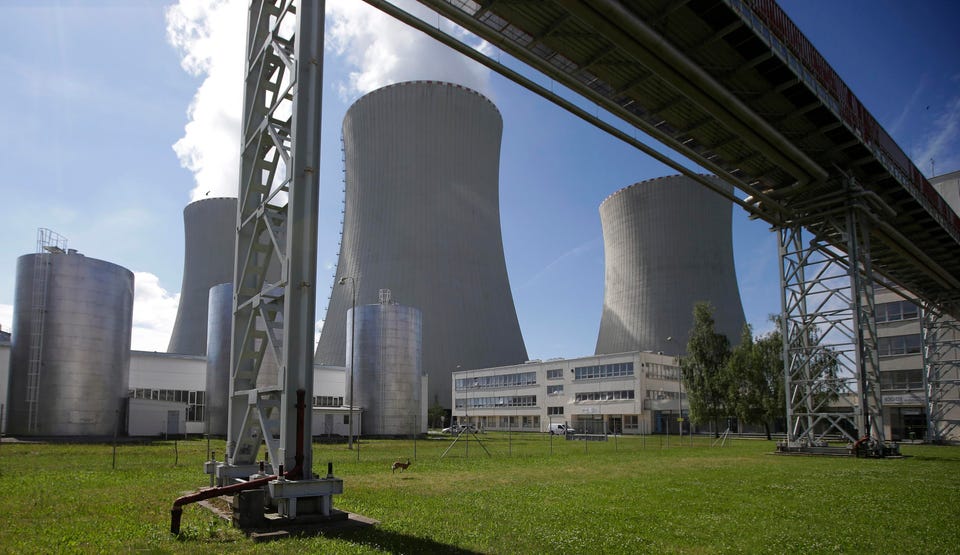Energy Ensuring A Safe Future For Nuclear Power Robert Rapier Senior Contributor Opinions expressed by Forbes Contributors are their own. Following New! Follow this author to stay notified about their latest stories. Got it! Sep 12, 2022, 06:00am EDT | New! Click on the conversation bubble to join the conversation Got it! Share to Facebook Share to Twitter Share to Linkedin FILE – Smoke rises from cooling towers of the nuclear power plant Temelin near the town of Tyn nad .
. . [+] Vltavou, Czech Republic, June 25, 2015.
The Czech state-controlled power company CEZ said on Tuesday, June 28, 2022, Pennsylvania-based Westinghouse and Framatome will contribute to the country’s energy security by supplying the Temelin nuclear fuel for more than 10 years, starting in 2024. (AP Photo/Petr David Josek, file) Copyright 2022 The Associated Press. All rights reserved.
The world needs to expand global nuclear power generation to help curb global carbon emissions. That conclusion is based on numerous models and projections that indicate that renewables can’t do it alone. But there is a significant caveat.
We simply can’t have major nuclear incidents such as those that took place at Chernobyl, Ukraine and Fukushima, Japan. These are what I consider low-risk, but high-consequence events. In the history of nuclear power, there have been few serious incidents.
But nuclear power plants have the unique potential to permanently displace entire cities in the event of a serious accident. The Chernobyl accident ultimately displaced some 350,000 people from their homes. Thousands of square kilometers were set aside as an uninhabited exclusion zone around the Chernobyl nuclear plant.
Many people were also displaced as a result of the Fukushima accident, albeit it not as many as with Chernobyl. If nuclear power is to realize its potential for reducing carbon emissions, we must ensure that such accidents are no longer possible. Building Safer Nuclear Plants MORE FOR YOU Here’s The List Of 317 Wind Energy Rejections The Sierra Club Doesn’t Want You To See Revisiting The Blame For High Gas Prices Why Do ‘Fracking’ Opponents Ignore Its Moral Benefits? I recently had a chance to speak about these issues with Dr.
Kathryn Huff, the Assistant Secretary at the Department of Energy’s Office of Nuclear Energy. Dr. Huff explained that passive safety systems are the key to ensuring that in the case of an accident, workers could walk away from a nuclear plant and it would shut down in a safe state.
There is an important distinction to be made here. The public may expect nuclear designs to be fail-proof, but there are many reasons why that metric will never be achieved. You simply can’t guard against every possible incident that could occur.
Thus, we try to mitigate possible consequences, and implement fail-safe designs. A simple example of a fail-safe design is an electrical fuse. It doesn’t prevent an incident where too much current tries to flow across the fuse.
But if that happens, the connection melts and stops the flow of electricity — a fail-safe condition. Neither Chernobyl nor Fukushima were fail-safe designs. But how can such fail-safe designs be realized? Dr.
Huff pointed out two examples. The first is the new AP1000® pressurized water reactor (PWR) from Westinghouse . The problem in Fukushima was that after the shutdown, power needed to be available to circulate water to cool the reactor.
When power was lost, the ability to cool the reactor core was gone. The new APR reactor relies on natural forces like gravity, natural circulation, and compressed gases to circulate water and keep the core and the containment from overheating. In addition to passive cooling, there have been innovations in developing next generation fuel types that are accident tolerant.
For example, tri-structural isotropic (TRISO) particle fuel is made of a uranium, carbon, and oxygen fuel kernel. Each particle is its own containment system thanks to triple-coated layers. TRISO particles can withstand much higher temperatures than current nuclear fuels, and simply can’t melt in a reactor.
Dr. Huff said that an advanced reactor demo will be online by the end of the decade, featuring a pebble bed full of TRISO particles. These two innovations may ensure that future nuclear plants never experience a major accident.
But there are additional questions that need to be addressed, such as disposal of nuclear waste. I will address that — as well as what the U. S.
is doing to promote nuclear power — in Part II of my conversation with Dr. Huff. Follow me on Twitter or LinkedIn .
Check out my website or some of my other work here . Robert Rapier Editorial Standards Print Reprints & Permissions.
From: forbes
URL: https://www.forbes.com/sites/rrapier/2022/09/12/ensuring-a-safe-future-for-nuclear-power/



